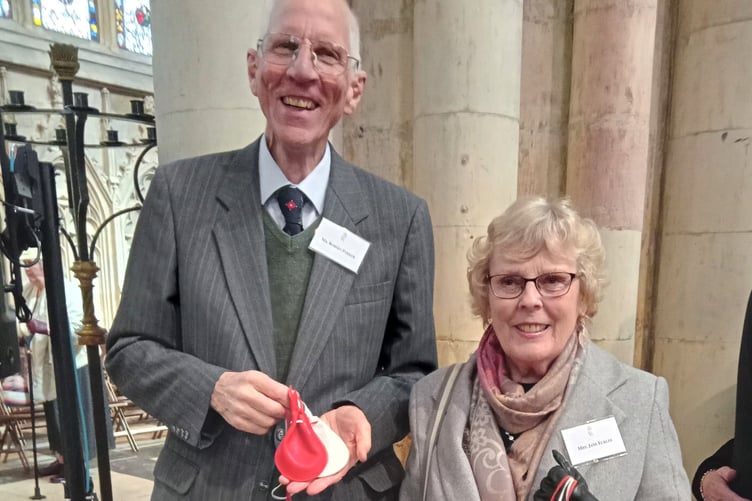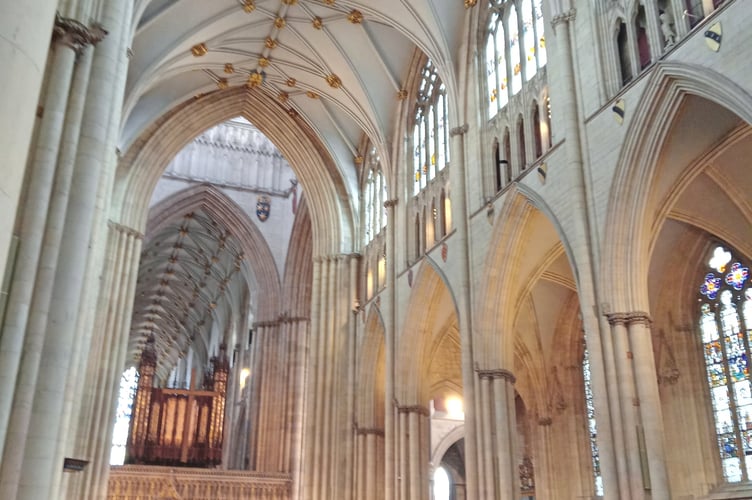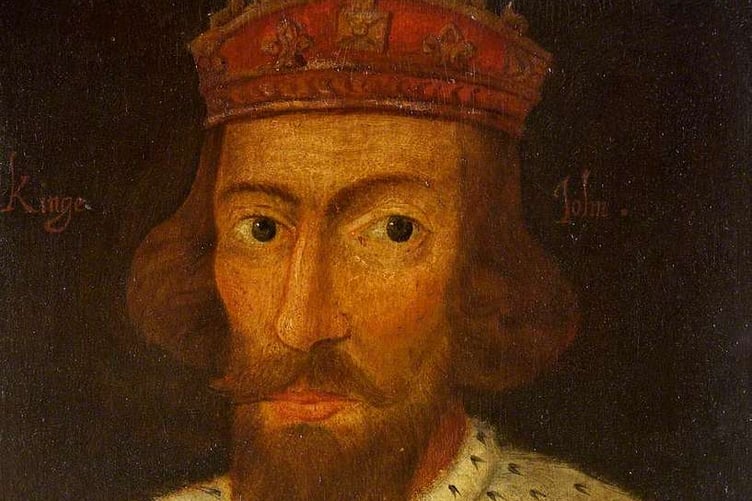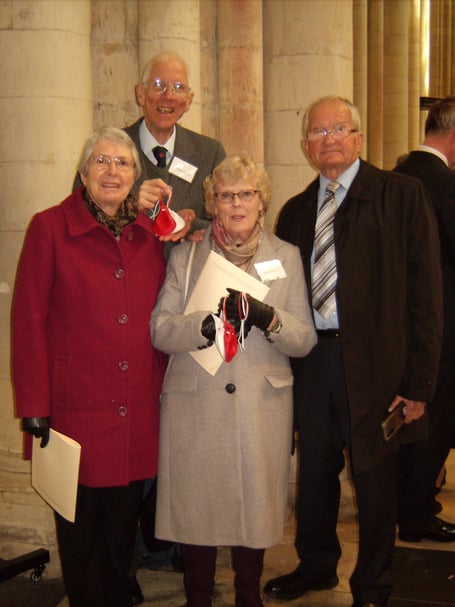It was “a tremendous privilege” for Jane Eckles and Robert Parker to represent the people of the Church of the Good Shepherd, Four Marks, at this year’s Royal Maundy Ceremony at York Minster, as recipients of Maundy Money from King Charles – his first such ceremony as monarch.
To be chosen to represent Four Marks Church ‘for service to their church and to the local community’ was “a great honour”, say Jane and Robert.
“Indeed the King exuded genuine warmth and kindness as he pressed the Maundy purses into our hands and thanked us for our service,” they added.
Both recipients were nominated by the Right Reverend David Williams, Bishop of Basingstoke, and were accompanied (as ‘companions’) by their spouses, Rod and Jane respectively.

All four agreed that it was, “for us all, a tremendous privilege to have been part of the King’s first distribution of Royal Maundy gifts as Sovereign of the United Kingdom, especially in the awe-inspiring setting of York Minster”.
Each year the distribution of the Royal Maundy gifts is to a number of ladies and to a number of gentlemen equal to the age of the Monarch, this year 74 ladies and 74 gents.
The recipients, who must be of retirement age, received two purses – one red and one white. The purses were handed by the King to recipients on the south side of the Minster after the first lesson, and to those on the north side after the second lesson, with a simple “Thank you, Sir” response on receipt.
This year the red purse contained a £5 coin commemorating the King’s 75th birthday, which is in November, and a 50p coin commemorating the Windrush generation. Both coins were minted in 2023. Historically the red purse contained an allowance of £3 for clothing, £1.50 in lieu of provisions and £1 for the redemption of the Sovereign’s gown.

The white purse contained uniquely-minted Maundy Money in the form of one, two, three and four silver penny pieces, the sum of which equalled the number of years of the Monarch’s age – 74 pence.
The Royal Maundy can be traced back in England with certainty to the 13th century, and there are continuous records of the distribution having been made on Maundy Thursday from the reign of King Edward I.
The first recorded Royal Distribution was at Knaresborough, Yorkshire, by King John, the infamous ‘Bad King John’, in 1210.

From the 15th century the number of recipients has been related to the years of the sovereign’s life.
An updated issue of hammered-coinage Maundy Money (attributed to Charles II) started in 1662 and the six alms dishes used for the distribution date from his reign.
The first full set was issued in 1670. The coins were struck in sterling silver (of 925 millesimal fineness) until the general change in 1920 to silver of 500 millesimal (50 per cent) fineness.
The sterling standard was resumed in 1946 and the face values were raised from old to new pence when the UK currency was decimalised in 1971.





Comments
This article has no comments yet. Be the first to leave a comment.